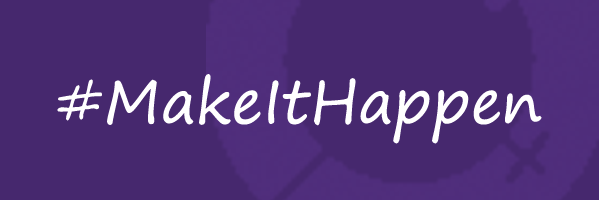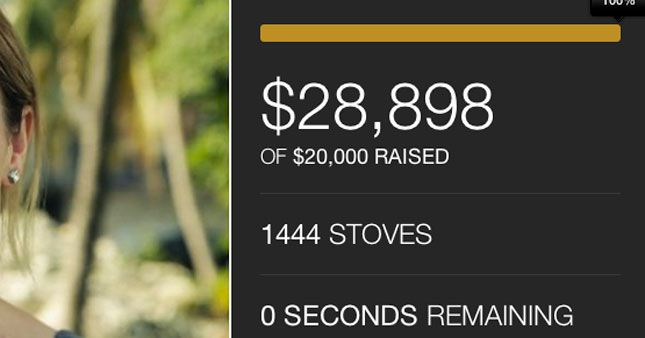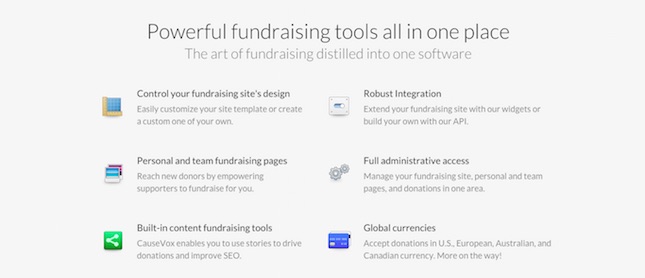
International Women’s Day, on March 8 every year has been celebrated since the early 1900s but has gotten more traction in recent years as the international development community has amped up its efforts online and offline. Now, hundreds, if not thousands of organizations raise funds and run awareness and advocacy campaigns for this global day of recognition, focusing on issues from maternal and reproductive health and child marriage, to education and entrepreneurship.
Women and girls are a resonant issue in the nonprofit community, and it provides a great opportunity for organizations of all sizes to draw more focus on their individual and collective efforts. This year’s theme for International Women’s Day (IWD) is “Make It Happen” celebrating the numerous achievements of women around the world, but also calling for great equality and recognition.
Whether this is your first foray into fundraising for IWD, or you’re looking for some fresh ideas, we hope this guide will provide some steps and insights to crafting a successful IWD crowdfunding campaign. And since we’re only a few weeks away, it’s time to get started!

What’s Your International Women’s Day Theme?
As we said, this year’s global theme is #MakeItHappen. But it’s important to take that and personalize it for your organization’s mission and goals. What does making it happen to look like to you? What does it look like to the women and girls that your nonprofit works with or serves?
Some organizations make the mistake of creating a generic fundraising campaign and slapping a hashtag on it, without telling their unique perspective. Donors should know exactly why women and girls are important to YOUR cause, and how YOU are going to help #MakeItHappen with their contributions. So here are some things to think about and ask as you craft your IWD campaign:
- Does my organization have a specific program to support women and girls? What does it do?
- Can funds raised from this campaign be restricted to women and girls programming, or will it go into an unrestricted general fund?
- How does my organization help to #MakeItHappen for women and girls around the world? How can my donors help to #MakeItHappen?
- What does #MakeItHappen mean? Does it relate to achievements in education, business, health, family, sports, or other?
- What will it take, financially, and in other ways, to #MakeItHappen – in the short term (2015) and long term?
- Can I break donation amounts and impact metrics into specific, tangible items that would #MakeItHappen for an individual or community we serve?
- What does #MakeItHappen look like for our storytelling efforts? What media and resources do we have for this effort?
- Should we partner with another organization?
Some of these questions may be more pertinent than others, and that’s okay, depending on your goals and resources. We generally recommend that you ask these types of questions for all theme-based crowdfunding campaigns, even the ones with short timelines like International Women’s Day (your campaign likely won’t last more than three weeks).
Crafting Your Fundraising Appeal

Once you’ve determined your personal International Women’s Day theme and goal, you’ll need to solidify your fundraising ask, or appeal. So if you’re trying to raise $50,000 for a women’s entrepreneurship program, it’s time to nail down all of the details around that ask.
There are several best practices for creating a compelling fundraising appeal, and these apply even more so with such a targeted message as International Women’s Day and #MakeItHappen. Keep these things in mind as you craft your appeal:
- Is the ask clear? In other words, if a donor comes across your campaign, will they know exactly what they are donating to?
- Is the ask focused? Have you been able to match your ask to a specific program or tangible items or action that will occur?
- Is the ask measurable? Will you be able to track the impact as you raise funds and then report back on it later?
- Is the ask compelling and/or urgent? Does your message drive people to donate by a deadline with a great story hook?
- Is the ask applicable to the #MakeItHappen theme? How does it tie back to the global issue of women’s achievements and the call for greater equality?
If you are struggling to get specific and create a compelling appeal, take a step back and think about what would resonate with you. What excites you about the opportunity to #MakeItHappen for women and girls? Perhaps you have a personal story that you can apply to this theme – what type of fundraising campaign might have contributed to that? What’s something that your organization has the capability to impact right now?
We’ve pulled together some sample appeals that may inspire you as you are coming up with your own. We also include some that are advocacy or awareness-based only, as many organizations do not fundraise, but instead solicit content, attendees for events, and more.
- Donate $25 to provide one hour of mentorship for a young woman.
- Help a class of girls in NYC attend a writing workshop. $50 covers the cost of one student.
- Let’s #MakeItHappen for the Women’s Collective in Honduras. Donate $20 to help cover the cost of a new crafting and workshop space.
- Submit a photo and caption of a woman or girl that inspires you to #MakeItHappen.
- Sign a petition to allow women to run for city council. #MakeItHappen
- Help us raise $35,000 to rebuild a school for local women entrepreneurs in Rwanda.
Keep in mind that these one-line asks are only part of your appeal. You’ll need to provide more context on your website, and in the rest of your communications and outreach, but you can see that these are the substance of your appeal, with the major details front and center. Check out the official International Women’s Day website to see what other organizations and businesses are doing to support this year’s #MakeItHappen theme.
Developing the story

Once you’ve nailed down your fundraising appeal, it’s time to figure out how to make it sing with storytelling. We’ve all seen the stunning photos of women and girls around the world, or videos highlighting historic achievements through the years. It’s clear that these mediums work – so why not make use of that if you have the resources?
But be sure to think beyond the usual photos and videos of smiling, happy people. How else can you portray the theme of #MakeItHappen? How can you really tell or show the story of how your organization can make an impact specifically around equality for women? This is your moment to really bring the potential of a seemingly broad and vague idea to life – what does “it” mean? Is “it” different for different people? When has “it” actually happened? There are all kinds of paths you could take with this…here are a few of our ideas you may want to run with.
- Create illustrations or graphics to show all the various achievements “It” could stand for. Even better: can the women and girls you serve submit their own art?
- Record voiceovers from women and girls of various ages describing when “it happened” to them.
- Build a fun timeline or life map that includes milestones of when women your nonprofit has served have made it happen, or what they hope to make happen in the future. Ask your community to add their own points on the timeline.
- Capture the facial expressions of women and girls as they recall moments in their life when they made it happen. (Then ask your community to submit their own.)
- Develop a virtual running list of all the things that can happen if you achieve your fundraising goals on your website. Cross off each item as you get closer to your goal.
Get more inspiration from women’s artwork and stories on the International Women’s day website.
Communications and Marketing

So now it’s time to start putting together all of the elements of your International Women’s Day fundraising campaign. You have your appeal, your story, and some media – how will you begin spreading the word? As with any other campaign, you will want to cross-promote on all of your channels, spending the most effort on the place that you feel will give you the most return on investment.
To that end, you may want to send fewer emails for a short campaign like this one, and focus on social media. Or you may want to post lots of short, informative, and compelling blog posts on your website and frequently update your homepage. Either way, you’ll want to make the most of your time and resources.
For something like IWD, you’ll want to make sure your organization’s campaign is included in the global conversation. That’s why making use of the resources from the official IWD website are extremely important – it can lend credibility to your efforts. And on social media, using global hashtags and collateral create a sense of unity around the issue and ensures that you appear in search results.
We’ve put together a snapshot of the key marketing and communications tools you should use for your IWD fundraising campaign (if you have them):
Website
- Homepage
- Featured image or banner with caption and call-to-action
- Secondary call out box for the campaign
- As necessary, a separate menu item
- Campaign page
- Include media such as photos, videos, social feeds, etc.
- Feed for related blog posts
- General information about the campaign
- Large donate button
- Resources, collateral, toolkits, downloads
- Donation page/site
- If using a page on your website, update the text or create a separate donation form if this is a restricted fund
- Update your auto-responders and thank you emails and pages
- Crowdfunding site
- Create an impact metric for the campaign and designate donation tiers
- Include updates and blog posts
- Social sharing features
- Images and other media
- Set up personal or team fundraising
- Blog
- Post at least 2-4 pieces about the campaign with stories and donation asks
- Post more frequently if you have more content that will compel donations, or if you have additional asks
- Short email series
- 1) Campaign intro with narrative and compelling story, soft donation ask
- 2) Hard donation ask with impact data and a real story
- 3) Final donation ask on March 8
- One email
- Send on March 8th
- Hard donation with a compelling story
- Other
- Include in a scheduled newsletter or update
- Include ask as a P.S. in an email on a different topic
- Tweak all auto-responders going out during your campaign to include an ask for the campaign
Social Media
- Consistently and frequently use the global hashtags when posting content about your campaign
- Share other organizations’ efforts
- Request that your peers and partners share your campaign
- Solicit content from your community that’s relevant to the campaign theme and your goals
- Supplement your fundraising appeal with stories, data, and other content you’ve created for the campaign
Partners & PR
- Reach out to partners to ask them to share the campaign with their networks
- Submit your campaign to the IWD website and other forums collecting various efforts
- Contact relevant journalists, bloggers, and media outlets to cover your campaign
Managing your campaign

While there is a lot of prep work that goes into creating even a small fundraising campaign like this one, you still have much to do once you’ve launched the campaign. You’ll need to monitor donations, continue to create and share content, respond to donors and supporters, and update your website as necessary if things change, or if you need to pivot mid-campaign.
Whether the campaign runs one week, one day, or three weeks, you’ll want to make sure you keep up a steady flow of communications and continue to amp up your fundraising appeals through March 8, especially if you are trying to reach a specific dollar amount.
On CauseVox, we’ve made it easy for you to adjust your campaign progress metrics, and to provide updates to the community through the site administration tool.
And remember – your campaign doesn’t end on March 8 just because International Women’s Day is over. While you may close the campaign to donations, you still have to follow up with your donors. You’ll need to communicate the results of the campaign and confirm what their money will go towards. If you can include even a general timeline of how soon their money will make an impact, even better. Over the course of the following months, you should strive to send more updates to your donors about the ongoing outcome of this campaign – collect videos, photos, and testimonials to show it, and turn it into case studies and stories of impact to feature on your website, in emails, and with media outlets.
Most important, you need to thank your donors. This continues to be the number one thing that donors want to hear from nonprofits – they want to be acknowledged for their support. Check out one of our favorite blog posts, 10 ways to thank your donors.
International Women’s Day is coming soon – we wish you the best of luck with your campaign! Contact the CauseVox team if you have questions or need support. We’d love to hear what you do to #MakeItHappen!
Editor's Picks
Ultimate Guide To Peer-to-Peer Fundraising
Customer Story: Spur Local Raises Over $1M With Their Give Local Campaign
Fundraising Strategies for Nonprofits: Craft the Best Approach for Your Organization
Create a Killer Fundraising Plan - Best Practices, Strategies, & Downloadable Template



